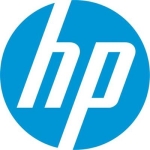What is our primary use case?
We have been using it in our test environment. On the customer side, we are using the small business variant of the tool. So, we are using Microsoft Defender for Endpoint and Microsoft Defender for SMBs. They're pretty similar, but the one for SMBs is a little lighter.
In our test environment, we have access to 50-seat licenses for everything. So, we are making sure that we are technically in a good place before we begin to offer this kind of solution to our clients. In addition to our solutions, we are delivering services to our clients. So, when we sell an SMB or enterprise Microsoft license, we are able to do the migration, management, and other things for a client.
How has it helped my organization?
It works well with different solutions from Microsoft. If a company is using Microsoft 365 package, this security addition is easier to implement and manage because it is from the same vendor. You have greater visibility because they are from the same vendor. Microsoft probably also has larger visibility on the endpoint itself because of its own operating system.
It provides good visibility into threats. I would rate it a seven out of ten in terms of visibility.
Its threat intelligence is helpful for preparing for potential threats before they hit and taking proactive steps. We can manage our own images, and we can also inform the client to patch certain things.
What is most valuable?
I've started to test it from the security point of view. There are plenty of features that are interesting, but at this time, the XDR functionality is most valuable. It is endpoint security on steroids.
It allows you to prioritize threats across the enterprise, which is very important because the SLAs are different for different cases. If the error is critical, you must act now. If something is just informal, it can be done in weeks.
What needs improvement?
I miss having an executive dashboard or a simple view for viewing things. Everything is extensive in this solution. Everything is configurable and manageable, but the environment of Microsoft 365 has about 13 administrative dashboards, and in each of the dashboards, there are a gazillion things to set up. It is good for a large enterprise, but for a 200-seat client, you need to see 5% of that.
A simplified SIEM would work so that we don't have to use everything on the Sentinel, which is great by the way, but Sentinel is too expensive for our kind of market. It is an enterprise product. It is not an SMB product.
For how long have I used the solution?
We have been using it for half a year in our test environment.
What do I think about the stability of the solution?
It is good. It is stable. Once you set it up, it works, but we haven't tested it on a large time scale. The solution itself is pretty young. We'll see how stable it will be in the next few years.
What do I think about the scalability of the solution?
It is very scalable. We hope to increase the usage of the product. It is being used only by our team for now at multiple locations. It is for laptops in the office and other networks and also for mobile devices. A few tech guys in our department are testing everything that could happen on the client side, and that's it.
How are customer service and support?
I didn't use their support for this solution, but the knowledge base, training, and documentation are pretty good. I would rate it a nine out of ten.
How would you rate customer service and support?
How was the initial setup?
It is complex. You need to first have a list of computers. Then, you need to set up the plan for these computers, and then, you need to deploy it and apply it. There are too many steps to deploy this kind of solution because it is a Microsoft native solution.
In terms of the implementation strategy, first, you need to have a view of the inventory. You have to have knowledge of what is already installed on an endpoint. You don't want to cause any clashes with some other endpoint security vendor. So, you need to know your devices. The next one is to prepare the package and then decide to deploy it via Intune or via MSI, through group policy.
In terms of duration, you can deploy it on one computer in minutes. If you are deploying it on a thousand computers and everything is set up correctly, it can be done in a few hours, but if everything is not set up correctly, it can take up to a day or a week.
It took a month for us to realize its benefits from the time of deployment. It takes some time to understand the settings, portal, etc.
It has not yet saved any time. It has only consumed my time for now because I need to learn and do the training and PoCs, but it is an investment for the future.
What about the implementation team?
The number of people required for deployment depends on the size of the client or the company. I can do it by myself if I have a client with 100 seats, but if there is a corporation or enterprise in several locations, we need to involve the local IT people to confirm everything is okay, etc.
It doesn't require any maintenance, but it requires somebody to take care of the consequences. You can implement endpoint security and just have it there. You don't have to maintain the solution itself, but you need to take care of the alerts. You need to take care of the patches and other things. The number of people required depends on the size of the client.
What was our ROI?
It hasn't saved us any money yet. It might save in the future, but it depends on the pricing of Microsoft because there are several different parts of the Microsoft solution.
What's my experience with pricing, setup cost, and licensing?
Everybody would like to see a lower price on everything. The Slovenian market is basically an SME market with clients having up to 100 seat licenses, comprising 90% of the company. They're very price sensitive. So, the price could be cheaper.
Any additional costs depend on the basic license of the client. There could be additional costs. If somebody needs Plan 2 of Defender for Endpoint, if I'm not mistaken, it is only available as an add-on. It is not included in any license, not even in the E5 license. So, there are some things at an additional cost.
Which other solutions did I evaluate?
We are always open to suggestions and newer and better things. We are constantly looking around for similar solutions and testing them. Microsoft is the biggest player. Everybody uses something from Microsoft. So, it is a logical next step. For an MSP, by having everything from one vendor or everything under one umbrella, managing clients is easier. This is the main reason for exploring this solution.
At the moment, we are using the Cynet XDR solution, and we also tried SentinelOne. We are going to put it in our portfolio in the following months, but mostly, we are comparing everything to Cynet because we have more clients on Cynet.
In comparison to other solutions that we are using, Microsoft Defender for Endpoint has not decreased our time to detect and time to respond much.
What other advice do I have?
In my opinion, from the management and maintenance point of view, it is better to go with a single vendor, but from the security point of view, multiple vendors on multiple layers could work better than one vendor. If one vendor is breached, then everything goes, but if you have several layers with several vendors, and only one is breached, you have other vendors.
My advice to those evaluating Microsoft Defender for Endpoint is to stick with it and train themselves. They should know the solution and try it as much as they can. Microsoft is on the right path here.
It helps to automate routine tasks and the finding of high-value alerts, but we haven't yet implemented automation. We are planning to implement it, but at this time, because of a small number of clients, it is easier to do it manually. We just look into the alerts and resolve them one by one. We don't have a few thousand alerts per day, per week, or per month. So, it is manageable to handle them manually.
It would help us to eliminate looking at multiple dashboards and have one XDR dashboard, but we haven't yet managed to do that.
I would rate it an eight out of ten. I would have rated it a ten, but it is a pretty pricey solution.
Which deployment model are you using for this solution?
On-premises
Disclosure: My company has a business relationship with this vendor other than being a customer. Partner













